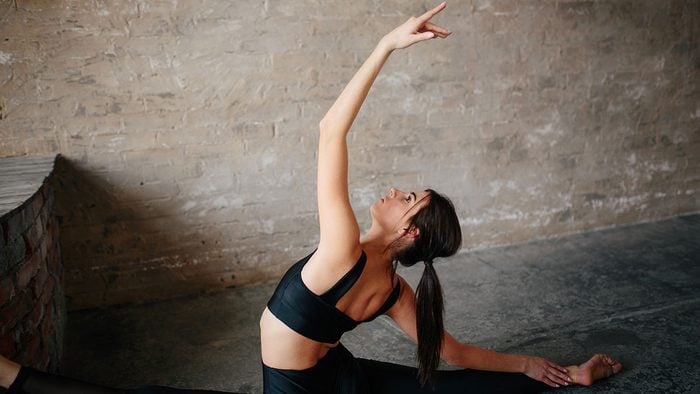
Types of yoga: Hatha
What it is: Hatha yoga is the physical practice of yoga that uses a combination of body postures (asanas), breathing (pranayama) and meditation (dyana) with the goal of invigorating both mind and body. It’s also where almost all modern styles of yoga are derived from.
Who it’s for: Hatha is a slower-paced practice, which focuses on breathing and basic poses, so it’s a great practice for beginners. Don’t miss the 8 ways yoga will transform your body and your health.
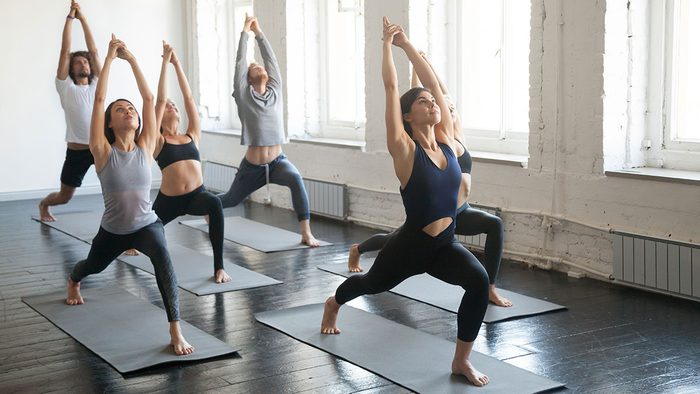
Types of yoga: Vinyasa
What it is: Vinyasa is also called flow yoga because of the fluid transitions between poses. Breathing is extremely important in this practice, as the movements are synchronized with the breath.
Who it’s for: There is a lot of movement and variety in Vinyasa, so if you’re hoping to sweat this style is for you.
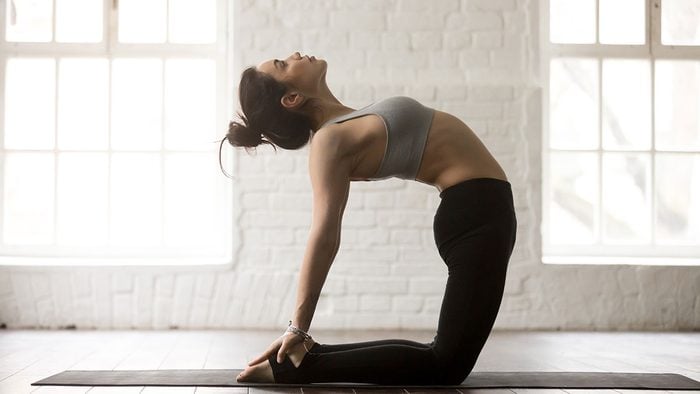
Types of yoga: Bikram
What it is: Bikram is hot! And by hot we’re talking temperature. Done in a sauna-like room at about 40.6 degrees Celsius and 40 percent humidity, a series of 26 poses and two breathing exercises are performed during every class.
Who it’s for: The high heat allows you to dig deep into the stretches, simultaneously building your stamina and flushing toxins from your body through intense perspiration. Hot yoga is not recommended for pregnant women, and those with heart problems should consult a doctor first. Here are some benefits of the practice.
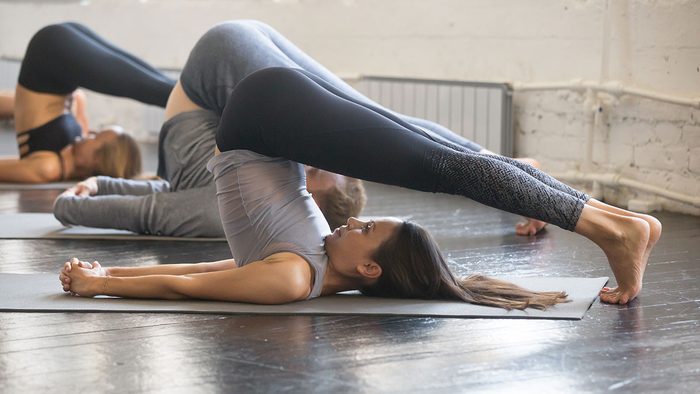
Types of yoga: Yin
What it is: A highly meditative practice, Yin yoga uses Taoist traditions and focuses on passive postures that target the connective tissues in the body, like the hips, pelvis and lower spine. It may be slow, but you need patience, as the poses are held anywhere from one to 20 minutes.
Who it’s for: Yin yoga is a great starting point for those who want to quiet the mind with meditation and is also ideal for fitness buffs in need of releasing tension in overworked joints. Here are 8 meditation mistakes that can secretly stress you out.
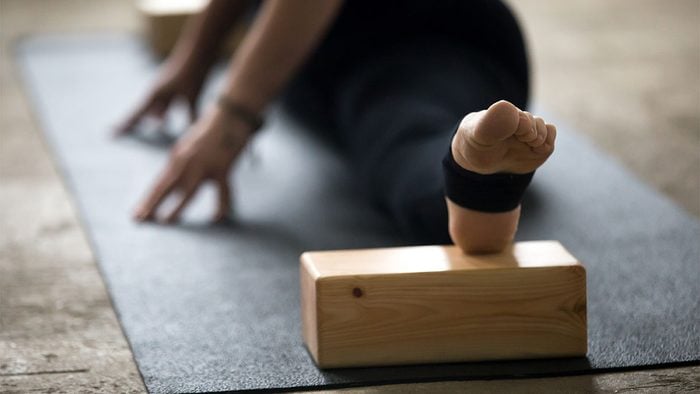
Types of yoga: Iyengar
What it is: Named after its founder B.K.S. Iyengar, this practice is a form of Hatha yoga, which teaches there is a correct way for every pose. To help achieve ideal alignment, the practice relies heavily on the use of props like blocks, straps, harnesses, chairs and boards. Ashtanga principles are also integrated with focus placed on linking specific asanas together.
Who it’s for: This is a great practice for more advanced yogis who want to better their alignment, but is also an ideal way for beginners to gain an understanding of the basic postures. Make sure you recognize these 10 signs that indicate your body (and mind) wants to practice yoga.
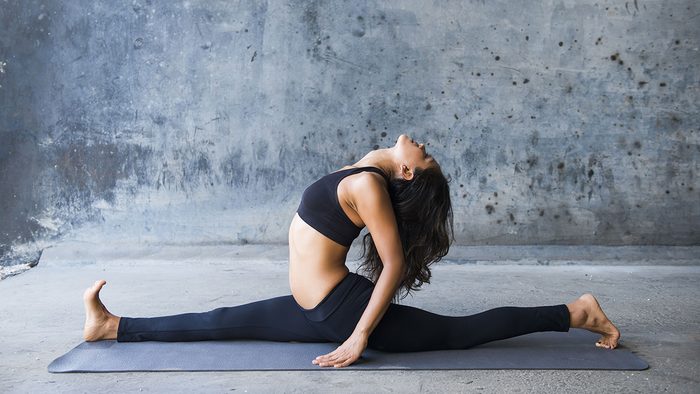
Types of yoga: Jock
What it is: Founded by Canadian yogi Michael DeCorte, Jock yoga is a style of power yoga, focusing on strength and endurance versus flexibility. The practice uses vigorous movements and strengthening postures, paired with contemporary music, with a goal of opening up stiff muscles. To stretch away stiffness, don’t miss out on this yoga flow.
Who it’s for: Yoga skeptics, athletes and those looking to amp up their strength, will love the high-energy and sweat factor of this practice.
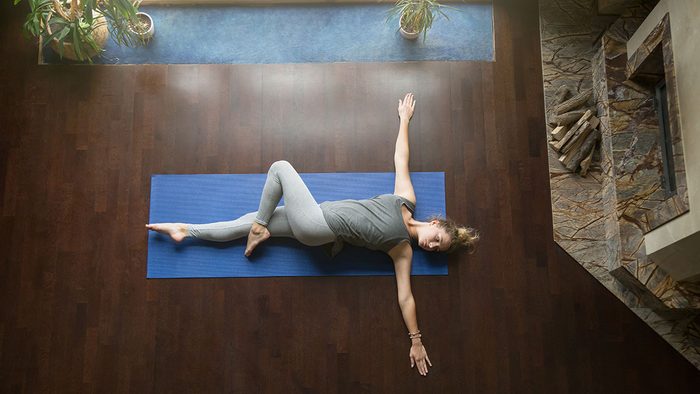
Types of yoga: Restorative
What it is: Forget sweating and think relaxation. Restorative yoga is all about healing the mind and body through simple poses often held for as many as 20 minutes, with the help of props like bolsters, pillows and straps. Practicing at home? Make sure you know this insider trick, it will help you stay motivated.
Who it’s for: Incorporating Restorative yoga into your routine nicely complements active practices. Because of the meditative quality of this style, it’s helpful for those recovering from illness and injury, including emotional trauma like divorce or the death of a loved one.
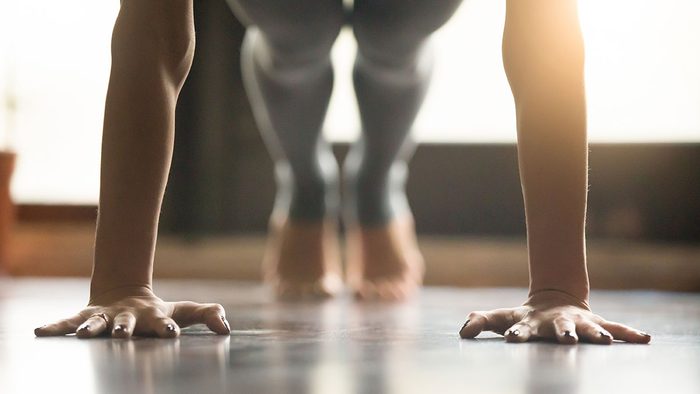
Types of yoga: Ashtanga
What it is: A Vinyasa-style practice, Ashtanga yoga uses six pose sequences practiced sequentially, at a rapid pace, synchronized with the breath. And if you’re having trouble sleeping, make sure to check out these 6 soothing yoga poses.
Who it’s for: Since the transitions between poses happen quickly, beginners should start with a slower-paced class to develop a solid understanding of the basics. A-types will appreciate the methodical style of the practice.
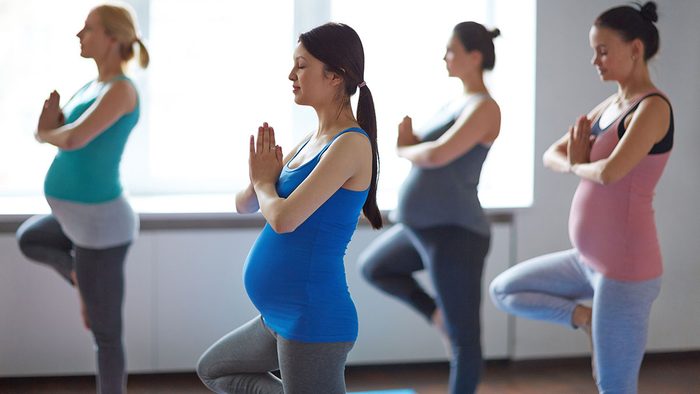
Types of yoga: Prenatal
What it is: Prenatal yoga is ideal for both expectant mothers and those who recently delivered. The pregnancy-safe poses will help you not only prepare for labour, but all of the stages of your pregnancy, through stretching and focused breathing.
Who it’s for: Any expectant mother—yogi or not—should try prenatal yoga, as it is a great way to help make for an easier and faster labour. Those who have not done yoga before may want to wait until the second trimester to start, as practicing before this time may make you feel faint, sick or dizzy.
Check out these 5 Canadian yoga brands (that aren’t Lululemon).
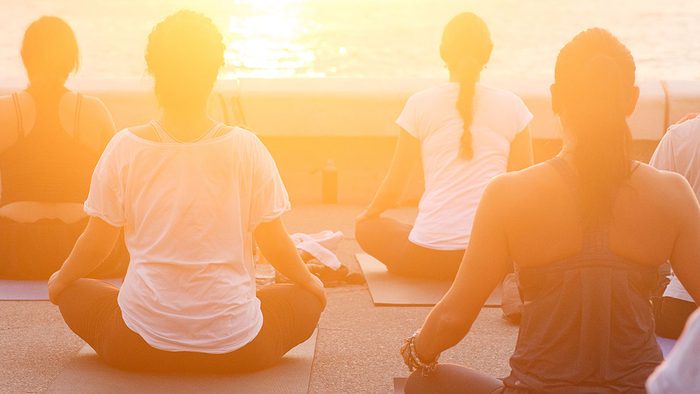
Types of yoga: Jivamukti
What it is: Founded in 1984 by David Life and Sharon Gannon, Jivamukti means “liberation while living.” This Vinyasa-style practice is physically and intellectually intense, with themed classes often including chanting, music and scripture readings.
Who it’s for: Those looking for more than just a physical workout should consider this practice, as it encourages its students to apply yogic philosophy to their daily life.
Want to teach? Here’s how to find out if yoga teacher training is the right choice for you.
